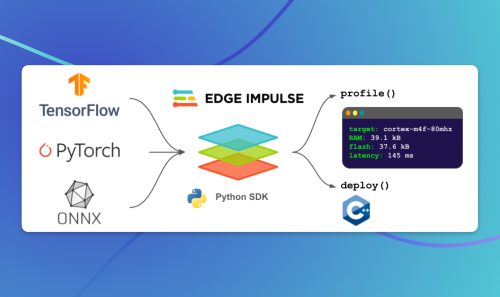
Best Workstations for Deep Learning, Data Science, and Machine Learning (ML) for 2022
Last Updated on January 7, 2022 by Editorial Team
Author(s): Towards AI Team
Originally published on Towards AI the World’s Leading AI and Technology News and Media Company. If you are building an AI-related product or service, we invite you to consider becoming an AI sponsor. At Towards AI, we help scale AI and technology startups. Let us help you unleash your technology to the masses.

It’s time to unleash AI supercomputing power right from your PC. We have looked at over 5000 desktops [1] and picked what we consider to be the best workstations for deep learning, machine learning (ML), and data science for every budget.
Helping Scale AI & Technology Startups to Enterprises | Towards AI
One of the most significant advantages of either building or purchasing an AI PC is that you’ll be able to upgrade most of the components yourself as you see fit. So, for example, if you need more RAM, you can go from 16 GB to 32 GB, 64 GB, 128 GB, etc. — depending upon the limitations of your motherboard. The same applies to upgrading your GPU. For instance, if your rig had an RTX 3060, and NVIDIA comes up with newer GPUs in a couple of years, you can easily swap them and future-proof your rig even more.
Another considerable advantage of going for an AI PC instead of an AI laptop is that you’ll be able to perform more power-hungry consuming tasks very well without needing to worry too much about the cooling capabilities of the AI rig. NVIDIA also has more possibilities for CUDA-Enabled GPUs for desktops, such as the RTX AXXXX series and the Quadro RTX options. You can see the complete list of the AI-powered GPUs in this list by NVIDIA Developer.
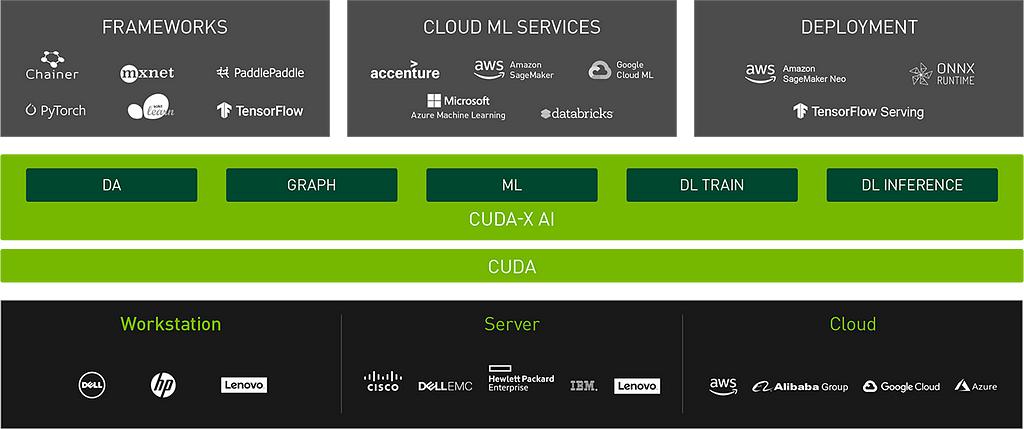
But buying an AI PC rig also has disadvantages, for instance, if you travel a lot, you may find that purchasing a deep learning laptop would be more convenient for you, due to the amount of travel that you’ll be doing, and that for the most part, if you buy a suitable rig, you’ll be able to perform most AI-related tasks well on either of the two.
For data leaders who have more ample budgets and needs, having both an AI workstation and an AI laptop would make more sense due to the flexibility it offers to have both at your disposal. And for every AI task you can think of, including running powerful models in TensorFlow, PyTorch, Jupyter, CUDA, cuDNN, and so on.
We continue to receive a large number of emails from AI enthusiasts asking for the best AI rigs. So we made this list of the best PCs for AI projects. Please contact us at pub@towardsai.net if you have any suggestions to add to the list — we’ll be updating this article as we come up with newer and better AI workstations to power your every need.
Disclosure: Our editorial team at Towards AI writes authentic and trustworthy reviews and may receive a small compensation on products we select to support Towards AI’s efforts. For this article, as an Amazon Associate, Towards AI may receive a small commission from qualifying purchases made from it (at no extra cost to the buyer). For feedback, questions, or concerns, please email us at pub@towardsai.net.
📚 Check out our editorial recommendations for the best deep learning laptop. 📚
For Budgets under $ 1,000.00 ↓
In a moderate-budget AI — PC build, you will need to look for a processor to handle complex operations, such as Jupyter Notebooks. An Intel recommendation would be to use an i3 to i5, between the 10x to 11x F or K series, i.e., an Intel Core i5–11400F. The F and K series processors don’t have an integrated GPU, and they can perform most AI tasks competently. In addition to the Intel CPUs, we recommend checking out AMD CPUs as well since these have been reported to perform similarly in more economical price budgets.
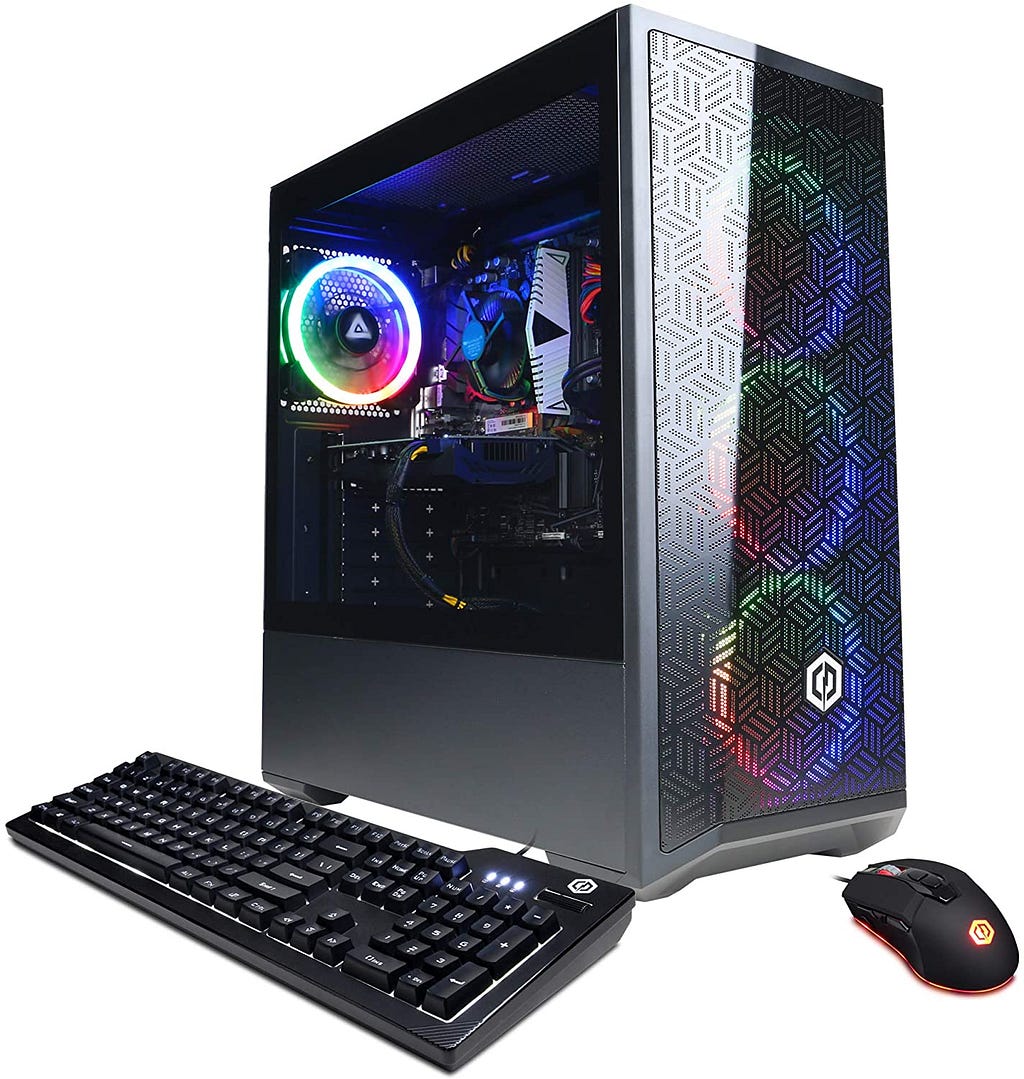
CyberpowerPC
Best PC under $ 1k. Ideal for data leaders who care about Intel processors, suitable RAM size, fair expandability, and RTX GPUs under a $ 1k budget.
Specs:
- Processor: Intel Core i5–11400F up to 4.5 GHz.
- Memory: 8 GB DDR4.
- Hard Drives: 500 GB NVMe SSD.
- GPU: NVIDIA GeForce RTX 2060 6 GB.
- Computing Power: 7.5 [9]
- Ports: 1x HDMI 2.0, 1x USB 3.1 Type-C, 2x USB 3.1, 1x USB 2.0.
- OS: Windows 11 Home.
- Connectivity: WiFi 802.11ax, Gigabit LAN (Ethernet), Bluetooth.
Grab one on Amazon
For Budgets ~ $ 1500
If you can stretch your budget a bit, we strongly recommend pursuing an RTX 30x PC and future-proof your rig even more. Such as this Amazon bestseller:
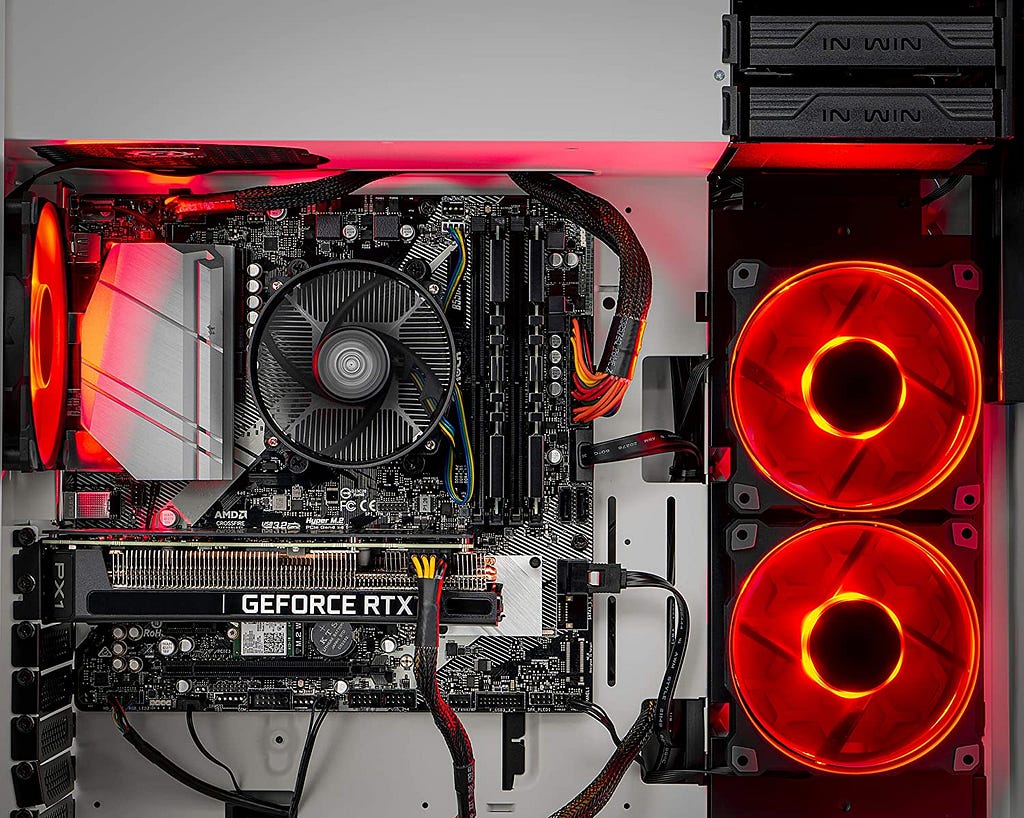
Skytech Shiva
Best PC approximating $ 1.5k. Ideal for data leaders who care about AMD processors, suitable RAM size, RTX 30x GPUs, and lots of expandability.
Specs:
- Processor: AMD Ryzen 5600X 3.7GHz
- Memory: 16 GB DDR4.
- Hard Drives: 1 TB NVMe SSD.
- GPU: NVIDIA GeForce RTX 3060 Ti 8GB.
- Computing Power: 8.6 [9]
- Ports: 1x HDMI 2.0, 1x USB 3.1 Type-C, 2x USB 3.1, 1x USB 2.0.
- OS: Windows 11 Home.
- Connectivity: WiFi 802.11ax, Gigabit LAN (Ethernet), Bluetooth.
- Power supply: 600w
Grab one on Amazon
For Budgets ~ $ 2000.00
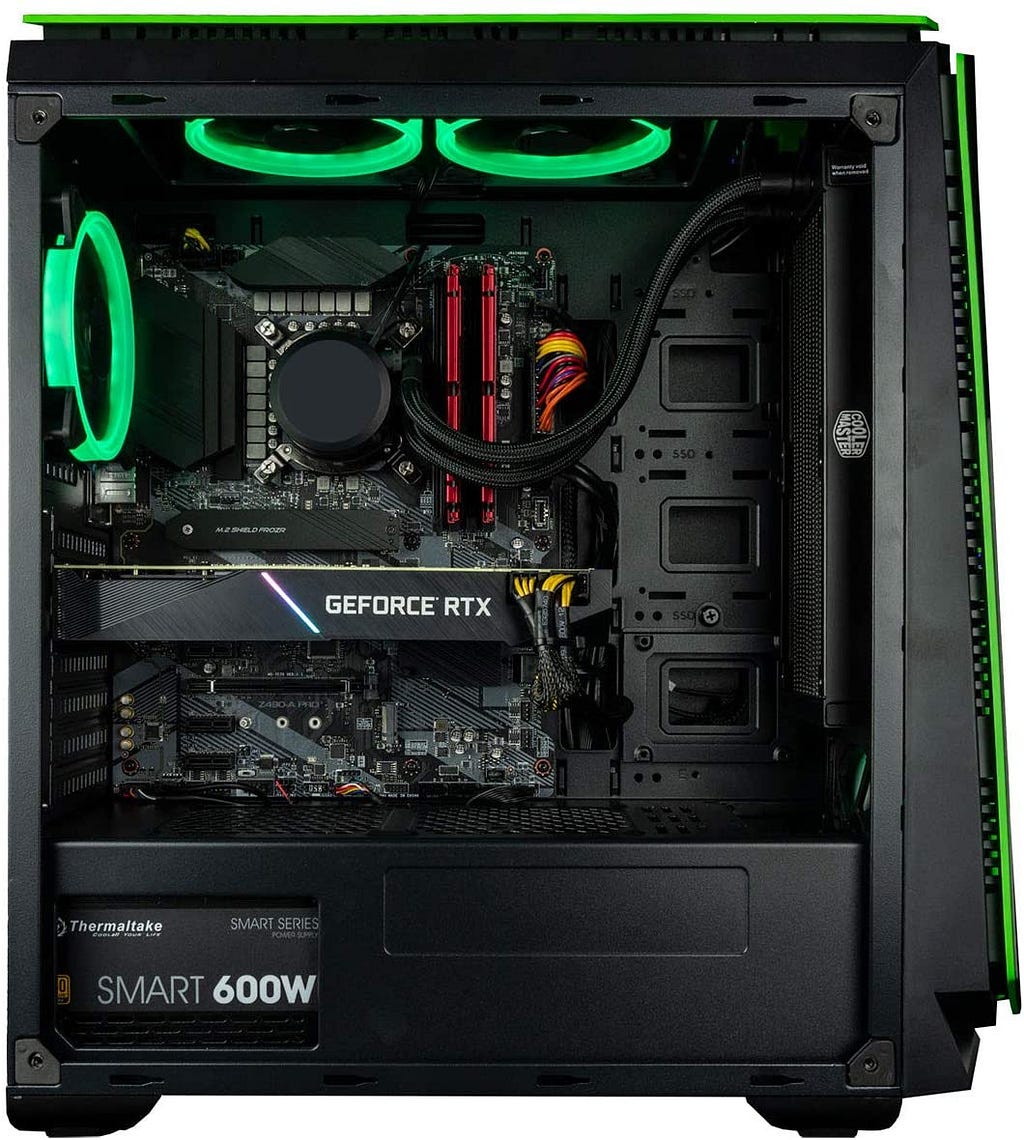
CUK Mantis
Best PC approximating $ 2k. Look at this beauty, the expandability, the motherboard, the liquid cooling — it leaves us in “aw.” This AI rig is ideal for data leaders who care about future-proofing their AI PCs, want the best in processors, large RAM, expandability, and RTX 30x GPUs. If you’d like to go with a better GPU but a bit less RAM, check out this SkyTech AI rig, offering an RTX 3070 Ti but with 16GB of RAM.
Specs:
- Processor: Intel Core i9 K-
- Memory: 32 GB DDR4.
- Hard Drives: 512 GB NVMe SSD + 2 TB HDD.
- GPU: NVIDIA GeForce RTX 3060 Ti 12GB.
- Computing Power: 8.6 [9]
- Ports: 1x HDMI 2.0, 1x USB 3.1 Type-C, 2x USB 3.1, 1x USB 2.0.
- OS: Windows 11 Home.
- Connectivity: WiFi 802.11ax, Gigabit LAN (Ethernet), Bluetooth.
- Power supply: 600w
Grab one on Amazon
For Budgets ~ $ 3k
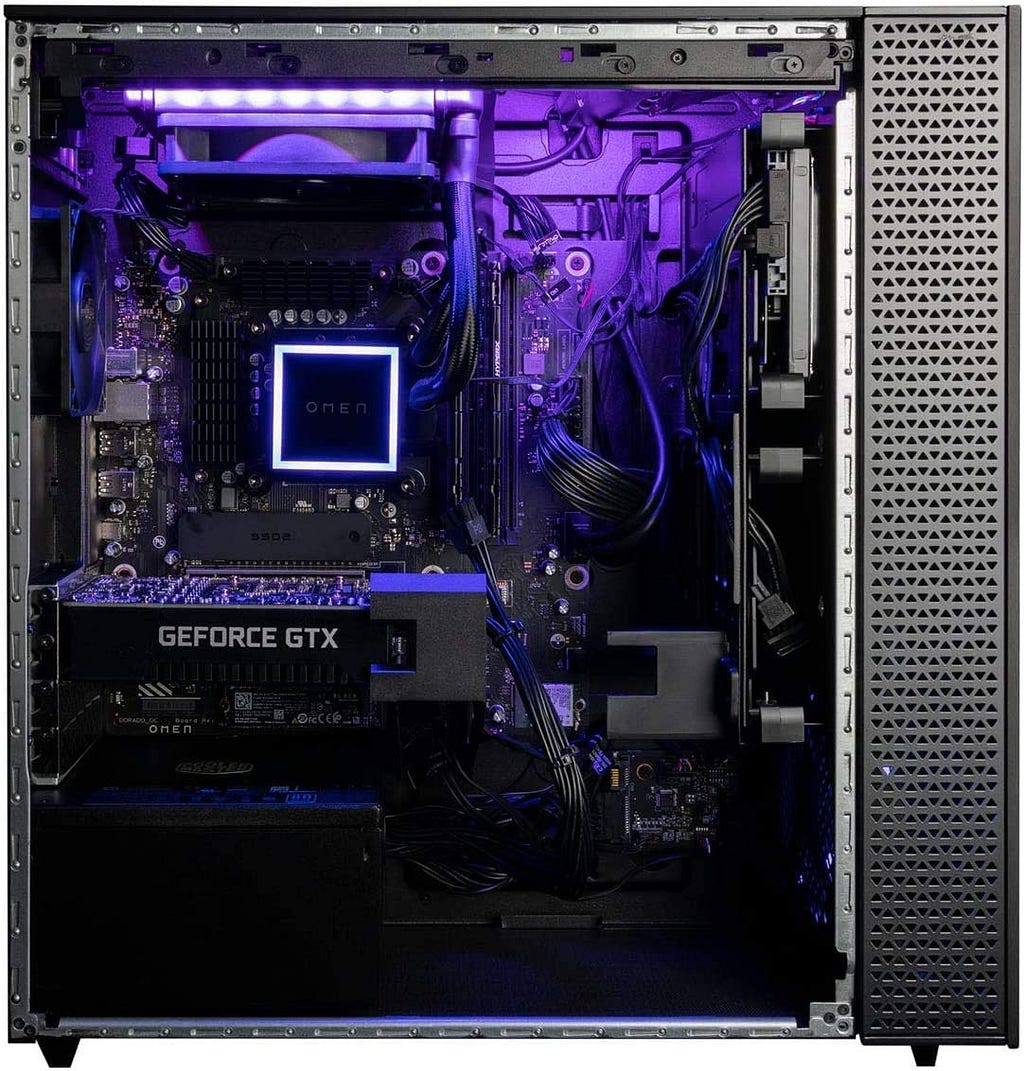
CUK Omen 30L
Best PC under $ 3k. Beautiful AI rig, this AI PC is ideal for data leaders who want the best in processors, large RAM, expandability, an RTX 3070 GPU, and a large power supply.
Specs:
- Processor: Intel Core i9 10900KF.
- Memory: 32 GB DDR4.
- Hard Drives: 1 TB NVMe SSD + 2 TB HDD.
- GPU: NVIDIA GeForce RTX 3070 8GB.
- Computing Power: 8.6 [9]
- Ports: 1x HDMI 2.0, 1x USB 3.1 Type-C, 2x USB 3.1, 1x USB 2.0.
- OS: Windows 11 Home.
- Connectivity: WiFi 802.11ax, Gigabit LAN (Ethernet), Bluetooth.
- Power supply: 750w
Grab one on Amazon
Monster AI Rigs — Unlimited Budgets!
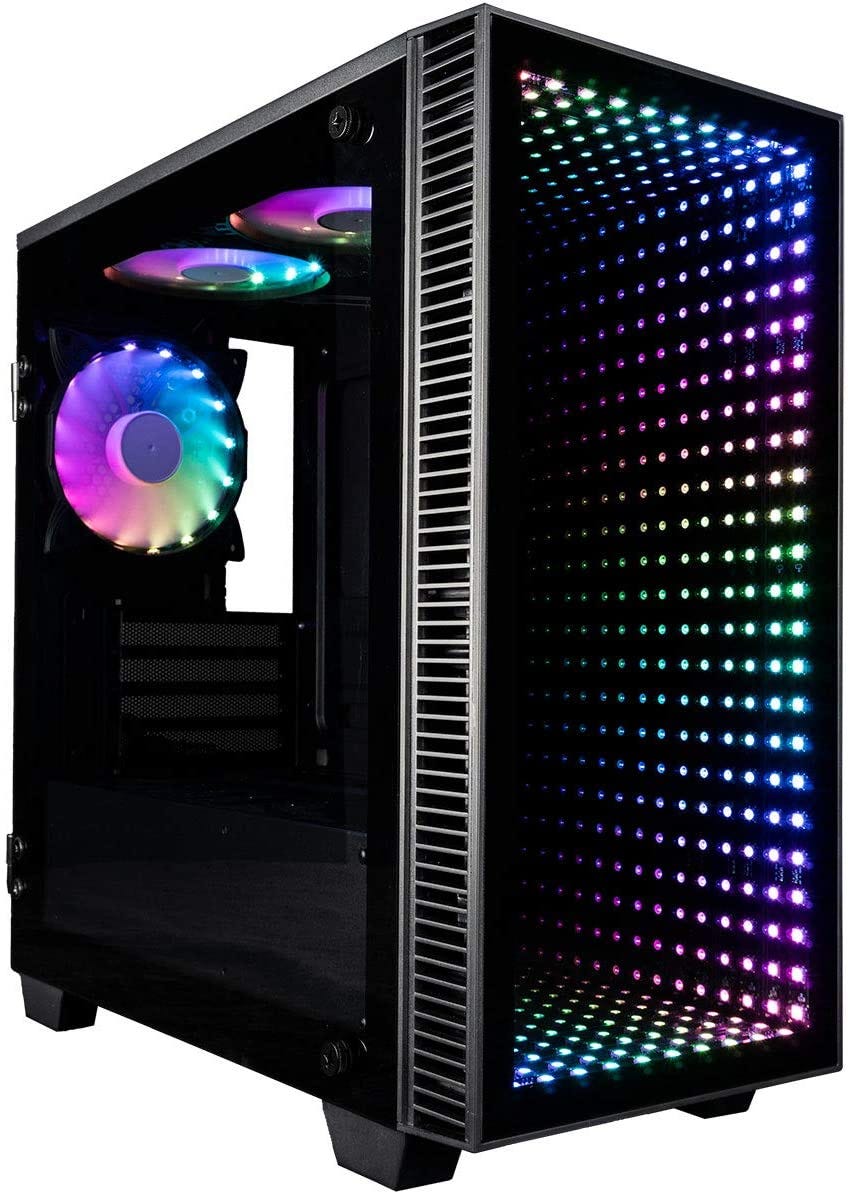
CUK Continuum
[Tie] Best AI workstation. Beautiful AI rig, this AI PC is ideal for data leaders who want the best of the best but are inclined toward an AMD processor.
Specs:
- Processor: AMD 9 5950X 3.4GHz up to 4.9GHz
- Memory: 64 GB DDR4.
- Hard Drives: 1 TB NVMe SSD + 3 TB HDD.
- GPU: NVIDIA GeForce RTX 3090 24GB.
- Computing Power: 7.5 [9]
- Ports: 1x HDMI 2.0, 1x USB 3.1 Type-C, 2x USB 3.1, 1x USB 2.0.
- OS: Windows 11 Home.
- Connectivity: WiFi 802.11ax, Gigabit LAN (Ethernet), Bluetooth.
- Power supply: 750w
Grab one on Amazon
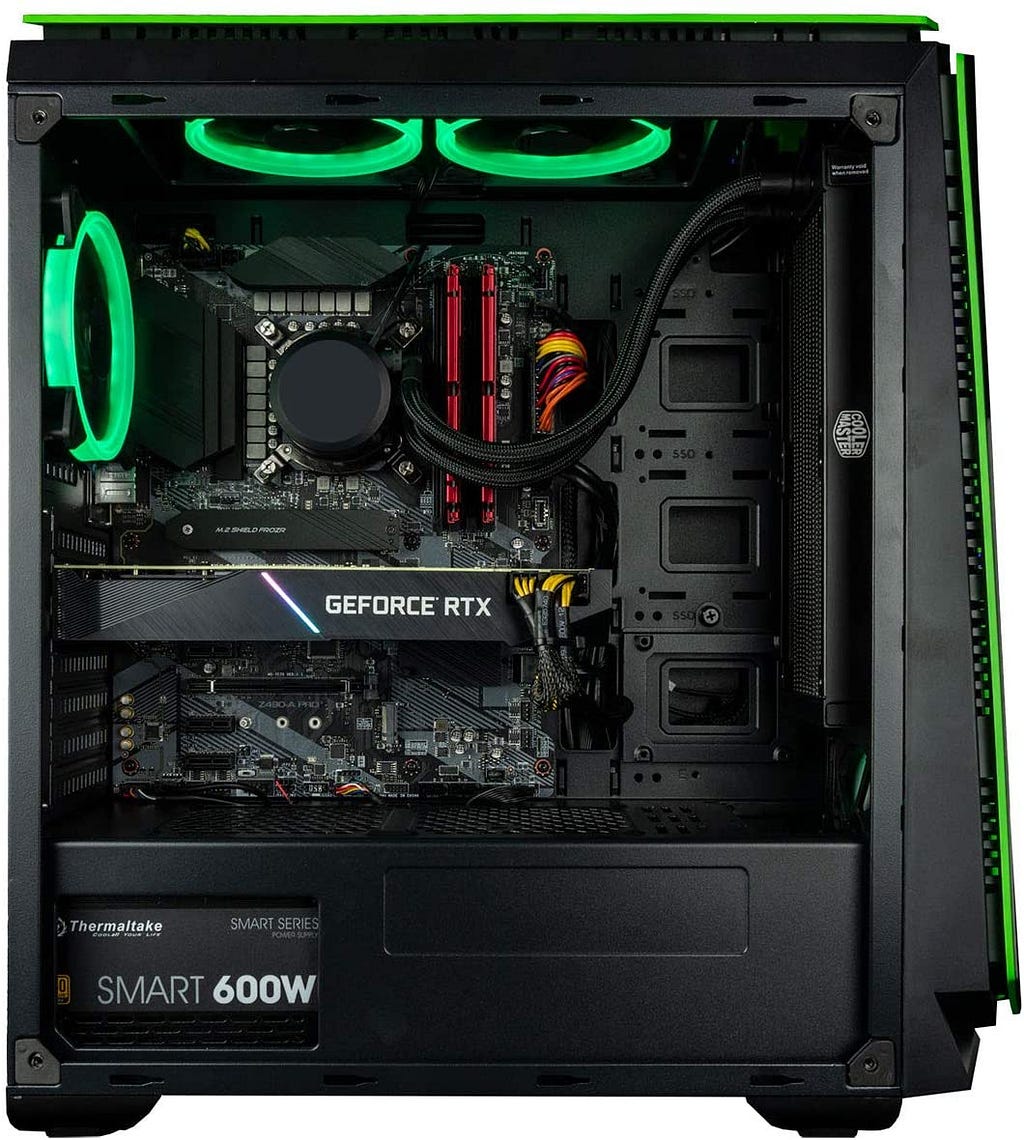
CUK Mantis
[Tie] Best AI workstation. Beautiful AI rig, this AI PC is ideal for data leaders who want the best of the best but are inclined toward an Intel processor and a very large power supply. This AI workstation is the top of the line of our $ ~2k recommendation.
Specs:
- Processor: AMD 9 5950X 3.4GHz up to 4.9GHz
- Memory: 64 GB DDR4.
- Hard Drives: 1 TB NVMe SSD + 2 TB HDD.
- GPU: NVIDIA GeForce RTX 3090 24GB.
- Computing Power: 7.5 [9]
- Ports: 1x HDMI 2.0, 1x USB 3.1 Type-C, 2x USB 3.1, 1x USB 2.0.
- OS: Windows 11 Home.
- Connectivity: WiFi 802.11ax, Gigabit LAN (Ethernet), Bluetooth.
- Power supply: 850w
Grab one on Amazon
Conclusion
We hope you find this list helpful in searching for an AI workstation for deep learning, machine learning, and data science projects. If you come across any phenomenal AI workstations, such as those mentioned in this list, please let us know by emailing us. If, instead of buying an AI desktop, you’d like to build one, stay tuned. We’ll be releasing a new list of recommendations with the best components to buy for your AI-powered workstation.
We’d also love to show our readers how to build an AI rig end-to-end. So if you represent a supplier and would like to sponsor an upcoming tutorial showing our audience how to build an AI rig, please feel free to contact us.
Thank you for reading!
- Join us ↓ | Towards AI Members | The Data-driven Community
- Shop ↓ | Towards AI
- Helping Scale AI & Technology Startups to Enterprises | Towards AI
References
[1] RTX Performance AI Rigs, Amazon, https://www.amazon.com/s?k=rtx+64gb+desktop&ref=nb_sb_noss_2
[2] Intel 10750H Q2 2020, Intel, https://www.intel.com/content/www/us/en/products/processors/core/i7-processors/i7-10750h.html
[3] Intel 9750H, Intel, https://www.intel.com/content/www/us/en/products/processors/core/i7-processors/i7-9750h.html
[4] AMD Ryzen 7 7800H, AMD, https://www.amd.com/en/products/apu/amd-ryzen-7-4800h
[5] Intel 10980 HK, Intel, https://ark.intel.com/content/www/us/en/ark/products/201838/intel-core-i9-10980hk-processor-16m-cache-up-to-5-30-ghz.html
[6] Intel 10875 HK. Intel, https://ark.intel.com/content/www/us/en/ark/products/202329/intel-core-i7-10875h-processor-16m-cache-up-to-5-10-ghz.html
[7] RTX 2080 vs. AMD Radeon Pro 5500M, User Benchmark, https://gpu.userbenchmark.com/Compare/Nvidia-RTX-2080-vs-AMD-Radeon-Pro-5500M/4026vsm960765
[8] RTX Performance Desktops, Amazon, https://www.amazon.com/s?k=rtx+64gb+desktop&ref=nb_sb_noss_2
[9] NVidia CUDA Geforce GPUS, Nvidia, https://www.nvidia.com/en-us/geforce/gaming-laptops/
[10] Nvidia CUDA Quadro GPUS, Nvidia, https://www.nvidia.com/object/quadro-for-mobile-workstations.html
[11] GPU UserBenchmark, https://gpu.userbenchmark.com/Compare/Nvidia-RTX-3060-vs-Nvidia-RTX-2070S-Super-Mobile-Max-Q/4105vsm1168355
[12] GPU UserBenchmark, https://gpu.userbenchmark.com/Compare/Nvidia-RTX-3080-Laptop-vs-Nvidia-RTX-2080S-Super-Mobile-Max-Q/m1443565vsm1114823
[13] CUDA-Enabled GeForce and TITAN Products, https://developer.nvidia.com/cuda-gpus
[14] Max-Q Design, Nvidia, https://www.nvidia.com/en-us/geforce/gaming-laptops/max-q/
[15] NVIDIA CUDA-X
GPU-Accelerated Libraries for AI and HPC, https://www.nvidia.com/en-us/technologies/cuda-x/
Best Workstations for Deep Learning, Data Science, and Machine Learning (ML) for 2021 was originally published in Towards AI on Medium, where people are continuing the conversation by highlighting and responding to this story.
Join thousands of data leaders on the AI newsletter. It’s free, we don’t spam, and we never share your email address. Keep up to date with the latest work in AI. From research to projects and ideas. If you are building an AI startup, an AI-related product, or a service, we invite you to consider becoming a sponsor.
Published via Towards AI
Take our 90+ lesson From Beginner to Advanced LLM Developer Certification: From choosing a project to deploying a working product this is the most comprehensive and practical LLM course out there!
Towards AI has published Building LLMs for Production—our 470+ page guide to mastering LLMs with practical projects and expert insights!

Discover Your Dream AI Career at Towards AI Jobs
Towards AI has built a jobs board tailored specifically to Machine Learning and Data Science Jobs and Skills. Our software searches for live AI jobs each hour, labels and categorises them and makes them easily searchable. Explore over 40,000 live jobs today with Towards AI Jobs!
Note: Content contains the views of the contributing authors and not Towards AI.





